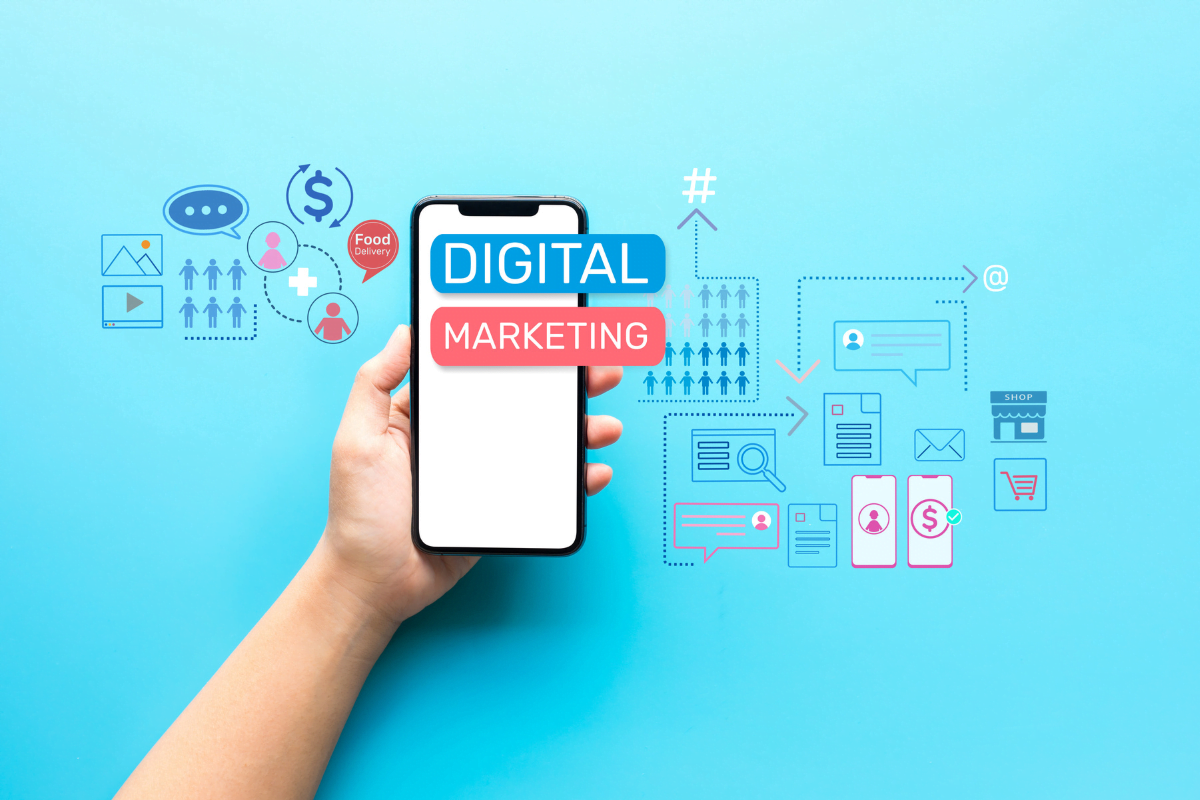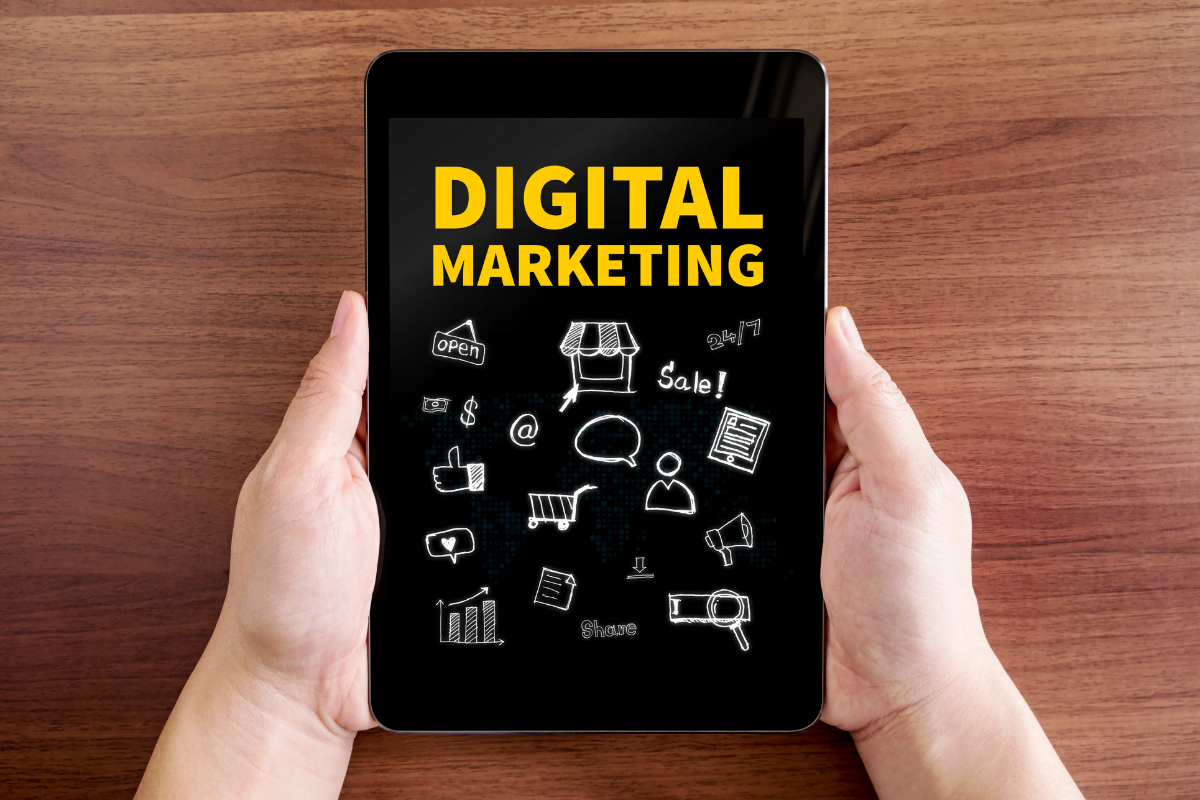Are you ready to take your online advertising game to the next level? Then let’s dive deep into the world of Digital Marketing 101 and equip you with all the tools and knowledge you need to master the art of online advertising.
Digital marketing has become an integral part of every business’s growth strategy. With millions of people spending a significant amount of time online, it’s crucial for businesses to effectively promote their products and services in the digital space. So, whether you’re a small business owner looking to increase your online presence or a digital marketer aiming to enhance your skills, get ready to unlock the secrets of successful digital marketing.
Now let’s dive in and master the art of online advertising together!
Insider Techniques For Online Success
Understanding The Different Types Of Online Advertising
When it comes to online advertising, there are various types that businesses can utilize to reach their target audience effectively. Here are some of the most common forms of online advertising:
- Search Engine Advertising: This type of advertising involves placing ads on search engine results pages. Businesses bid on keywords related to their products or services, and their ads appear when users search for those keywords. This allows businesses to target users who are actively searching for what they offer.
- Display Advertising: Display ads are graphic ads that appear on websites, social media platforms, and mobile apps. They can be in the form of banners, pop-ups, or video ads. Display advertising helps businesses increase brand awareness and reach a wider audience.
- Social Media Advertising: Social media platforms like Facebook, Instagram, Twitter, and LinkedIn offer advertising options to businesses. These ads can target specific demographics, interests, and behaviors, allowing businesses to reach their ideal customers.
- Video Advertising: Video ads are a popular form of online advertising, especially on platforms like YouTube. These ads can be skippable or non-skippable and allow businesses to engage with their audience through compelling visuals and storytelling.
- Native Advertising: Native ads are designed to blend in with the content of a website or platform. They are non-disruptive and appear as sponsored content, providing valuable information to users while promoting a brand.
Understanding the different types of online advertising as part of your Digital Marketing 101 efforts is crucial for businesses looking to create effective digital marketing strategies. By utilizing the right mix of advertising formats, businesses can maximize their reach, engage with their target audience, and drive conversions.
Setting Clear Goals And Objectives For Your Online Advertising Campaigns

When mastering Digital Marketing 101, it is crucial to set clear goals and objectives for an online advertising campaign to be successful. By doing so, you can ensure that your efforts are focused and directed toward achieving specific outcomes. Here are some key reasons why setting clear goals and objectives is essential:
- Improved Focus: Setting clear goals enables you to prioritize your advertising efforts. You can identify what you want to achieve and concentrate your resources on activities that will help you reach those goals. This focus allows you to make the most of your budget and maximize your return on investment (ROI).
- Measurable Results: Clear objectives provide a benchmark for measuring the success of your online advertising campaigns. By setting specific targets, such as increasing website traffic or generating leads, you can track your progress and determine if your efforts are effective.
- Strategic Decision-Making: Having well-defined goals and objectives allows you to make informed decisions about your online advertising strategy. You can assess different tactics, platforms, and messaging to identify what works best for your target audience and aligns with your overall marketing goals.
- Enhanced Optimization: Clear goals and objectives also enable you to optimize your online advertising campaigns. By monitoring and analyzing key performance metrics, such as click-through rates or conversion rates, you can identify areas for improvement and make data-driven adjustments to your strategies.
Setting clear goals and objectives is vital for successful online advertising campaigns. It provides focus, allows for measurable results, facilitates strategic decision-making, and enhances optimization. By defining your goals, you can ensure that your online advertising efforts are purposeful and ultimately drive the desired outcomes for your business.
Targeting The Right Audience: Key Strategies For Effective Audience Segmentation
In Digital Marketing 101, one of the most crucial steps toward success is targeting the right audience. By reaching out to the right people, businesses can maximize their advertising efforts and generate higher conversions. Here are some key strategies for effective audience segmentation:
- Demographic Segmentation: Divide your target audience based on demographic factors such as age, gender, location, and income. This helps you understand their preferences and tailor your marketing efforts accordingly.
- Psychographic Segmentation: Analyze your audience’s interests, values, attitudes, and lifestyle choices. This segmentation allows you to create personalized marketing messages that resonate with their unique needs and desires.
- Behavioral Segmentation: Segment your audience based on their behaviors, such as purchase history, browsing patterns, and engagement with your brand. This helps you identify high-value customers and target them with relevant offers and promotions.
- Geographical Segmentation: Divide your audience based on their geographical location. This allows you to adapt your marketing campaigns to suit local preferences, cultures, and languages.
- Social Media Segmentation: Leverage social media platforms to segment your audience based on their activities, interests, and online behavior. This enables you to target specific customer groups with tailored content and advertisements.
- Personalized Email Marketing: Use data collected from your audience segmentation to create highly personalized email campaigns. This ensures that each subscriber receives content that is relevant to their specific needs and interests.
- A/B Testing: Continuously test and refine your marketing strategies to identify the most effective methods of reaching your target audience. Monitor key metrics such as click-through rates, conversion rates, and engagement levels to make data-driven decisions.
By implementing these key strategies for effective audience segmentation, you can optimize your digital marketing efforts and maximize your return on investment. Remember, understanding your audience is the first step toward creating impactful and targeted campaigns.
Crafting Captivating Ad Copy: Tips And Tricks For Compelling Messaging

Crafting captivating ad copy is essential for grabbing the attention of your target audience. Whether you’re running a social media campaign or creating a Google AdWords ad, the messaging you use can make or break the success of your campaign. Here are some tips and tricks to help you create compelling ad copy:
- Know Your Audience: Before you start writing your ad copy, it’s crucial to understand who your target audience is. Conduct thorough research to identify their pain points, desires, and motivations. This knowledge will enable you to tailor your messaging specifically to resonate with them.
- Use Attention-Grabbing Headlines: Your ad copy’s headline is the first thing that users will see, so make it count. Use compelling language that piques curiosity and entices users to click on your ad.
- Highlight Unique Selling Points: What sets your product or service apart from the competition? Identify your unique selling points and emphasize them in your ad copy. Whether it’s a special offer, exclusive features, or exceptional customer service, make it clear why users should choose you.
- Create a Sense of Urgency: Urgency is a powerful motivator. Encourage users to take immediate action by incorporating phrases like “Limited time offer” or “Don’t miss out” in your ad copy. This will create a sense of urgency and prompt users to act quickly.
- Keep It Concise and Compelling: Online users have short attention spans, so keep your ad copy concise and to the point. Use clear and compelling language that communicates the value of your offer effectively.
By following these tips and tricks as you master the art of Digital Marketing 101, you can craft captivating ad copy that grabs the attention of your target audience and drives results. Remember to constantly monitor and tweak your ad copy to optimize its performance and meet your advertising goals.
Choosing The Right Advertising Platforms And Channels For Your Business
When it comes to online advertising, choosing the right platforms and channels for your business is crucial. With numerous options available, it’s important to understand which ones will yield the best results for your specific goals and target audience. To help you make an informed decision, here are some key factors to consider:
- Define Your Target Audience: Identify who your ideal customers are and where they spend their time online. This will help you narrow down the platforms and channels that align with your target demographic.
- Set Clear Goals: Determine what you want to achieve through your advertising efforts. Whether it’s brand awareness, lead generation, or sales, different platforms have varying strengths in delivering specific outcomes.
- Research Platform Demographics: Each platform has its own user base and demographics. For example, if your target audience is primarily young professionals, platforms like Instagram and LinkedIn may be more effective than others.
- Consider Your Budget: Advertising costs can vary widely depending on the platform. Evaluate your budget and choose platforms that offer a good return on investment within your financial constraints.
- Test and Analyze: Experiment with different platforms and channels to see which ones perform best for your business. Monitor key metrics such as click-through rates, conversions, and cost per acquisition to optimize your advertising strategy.
Remember, choosing the right advertising platforms and channels is an ongoing process. To succeed in your Digital Marketing 101 efforts, continuously analyze the performance of your campaigns and make adjustments as needed to maximize your results.
Measuring And Analyzing The Success Of Your Online Advertising Campaigns

There are several effective ways to measure and analyze the success of your online advertising campaigns. By tracking specific metrics, you can gain valuable insights into the performance and effectiveness of your digital marketing efforts. Here are some key methods for evaluating your online advertising campaigns:
- Conversion Rate: Monitor the percentage of website visitors who take the desired action, such as making a purchase or filling out a form. A high conversion rate indicates a successful campaign.
- Click-Through Rate (CTR): Measure the number of clicks your ads receive divided by the number of impressions they generate. A higher CTR suggests that your ads are engaging and compelling.
- Return on Investment (ROI): Calculate the revenue generated from your advertising campaigns compared to the amount spent. A positive ROI means your campaigns are profitable.
- Cost per Acquisition (CPA): Determine how much it costs to acquire a customer or lead. Lower CPA values indicate more efficient campaigns.
- Engagement Metrics: Analyze metrics such as time spent on site, bounce rate, and page views per visit to gauge user engagement with your ads and website.
- A/B Testing: Conduct experiments by creating multiple variations of your ads or landing pages to determine which elements perform best.
- Audience Demographics: Understand your target audience by examining data such as age, gender, location, and interests. This information can help you optimize your campaigns for maximum impact.
By utilizing these measurement and analysis techniques, you can make data-driven decisions to optimize your online advertising campaigns and achieve greater success in your Digital Marketing 101 endeavors.
Staying Up To Date With The Latest Trends And Innovations in Digital Marketing
In the fast-paced world of technology, it’s crucial to stay up to date with the latest trends and innovations when it comes to Digital Marketing 101. By doing so, you can ensure that your marketing strategies are effective and relevant in today’s ever-changing landscape. Here are some tips to help you stay ahead of the curve:
- Follow Industry Blogs and Websites: There are numerous blogs and websites dedicated to digital marketing. Make it a habit to regularly read these sources to stay informed about the latest trends, strategies, and best practices. Some popular websites include Moz, HubSpot, and Search Engine Journal.
- Attend Industry Conferences and Events: Conferences and events offer a great opportunity to network with industry experts and learn about the latest innovations in digital marketing. Look for conferences that focus on specific areas of interest, such as social media marketing or search engine optimization.
- Join Industry Communities and Forums: Engaging with like-minded professionals in digital marketing communities and forums can provide valuable insights and discussions. Platforms such as Reddit and LinkedIn Groups are great places to connect, learn, and share knowledge.
- Take Advantage of Online Courses and Webinars: Many online platforms offer courses and webinars on digital marketing topics. These resources can provide in-depth knowledge and practical tips from industry experts. Udemy, Coursera, and HubSpot Academy are some popular platforms to explore for such courses.
- Follow Industry Leaders on Social Media: Digital marketing experts and thought leaders often share valuable insights and industry news on social media platforms. Follow them on Twitter, LinkedIn, and Facebook to stay updated with the latest trends and innovations.
By staying up to date with the latest trends and innovations in terms of Digital Marketing 101, you can position yourself as an expert and ensure that your marketing efforts are effective and successful. Keep learning, experimenting, and adapting to stay ahead in this dynamic field.
Get Ahead Of The Game With Digital Marketing 101: Essential Strategies Revealed

Mastering Digital Marketing 101 is a crucial aspect of staying ahead in today’s competitive market. To master the art of online advertising, it is important to understand the essential tips and tricks revealed in this blog post. By implementing these strategies, you can get ahead of the game and drive success for your online advertising efforts.Moreover, incorporating AI in marketing can further enhance your digital marketing strategy. AI-powered tools can automate tasks, provide personalized recommendations, and analyze data to optimize your campaigns. By leveraging AI’s capabilities, you can streamline your marketing efforts and achieve better results.
In the fiercely competitive world of digital marketing, staying one step ahead is crucial to achieving success. Newman Web Solutions is your ultimate partner in navigating the ever-evolving digital landscape. With our proven expertise and unwavering commitment to delivering exceptional results, we provide the knowledge, tools, and strategies you need to thrive.
Don’t settle for mediocrity. Unlock your true marketing potential by booking a free marketing strategy session today!






